#historical implications
Explore tagged Tumblr posts
Text
Understanding Anglo-Saxonism in American History
Race and Manifest Destiny: The Origins of American Racial Anglo-Saxonism by Reginald Horsman (1981) Introduction Race and Manifest Destiny: The Origins of American Racial Anglo-Saxonism by Reginald Horsman is a critical work that examines the roots of the racialist ideology that dominated the United States during its territorial expansion in the 19th century. The author provides a comprehensive…
#African Americans#Anglo-Saxonism#biblical interpretations#civil war#contemporary implications#criminal justice#education disparities#historical implications#immigration#indigenous peoples#John L. O’Sullivan#legacy#Manifest Destiny#Mexicans#national identity#politics#racial ideology#racial inequalities#racial power structure#racial segregation#racial superiority#Reconstruction#Reginald Horsman#social Darwinism#structural racism#subjugation#territorial expansion#United States#westward expansion#white supremacy
1 note
·
View note
Text
ATLA (zukka….) au where everything is mostly the same except that the phrase “friend of the Avatar” is a euphemism for being gay, a la the phrase friend of Dorothy
(the phrase started towards the start of the 100 year war because in this universe Avatar Roku was some flavor of gay, then Sozin canonically banned gay marriage after their situationship went downhill. so people had to be more subtle about communicating their identities, something something something, the phrase became semi-commonplace throughout the fire nation and later the earth kingdom. maybe it started even earlier because of bi queen kyoshi. who knows!)
miscommunication and self-discovery ensues throughout the events of ATLA:
early on into his banishment and search for the avatar, Zuko runs into someone who casually mentions that they’re a “friend of the Avatar” and he’s immediately like “THE AVATAR IS ALIVE? WHERE ARE THEY. TELL ME”
…he learns a new phrase that day! perhaps he didn’t even know gay people existed until that awkward encounter (bc sheltered fire nation royal.) maybe he does some self reflection at this point, or perhaps he puts off his sexuality crisis in favor of his avatar hunting mission. who’s to say?
(the next time he hears someone say they’re “a friend of the avatar” he asks if they’re gay or if they actually know the avatar. you know, just in case they actually do.
….and the next time after that, too.
but after that he catches on pretty quickly that, no, it’s REALLY just a turn of phrase, and he does not repeat the mistake again.)
+ early into the series events sokka runs into some confusion when he mentions to a stranger that he’s a friend of the avatar while aang isn’t around—
sokka: hey so uhh i’m actually a friend of the avatar… think i can get a discount for that??
kindly ally shopkeeper: oh! i love that for you!! you know, i have a cousin who’s gay, real swell guy. anyways about the discount—
book one sokka, canonically sexist and with perhaps a fragile masculinity: what wait a sec, IM NOT GAY??????
shopkeeper: oh that’s okay, you don’t have to explain yourself or put a label on it to me (:
(sokka does in fact get a discount.)
he walks back to katara who was waiting for him and overheard the whole conversation, and she says “you know, sokka, it’s fine if you like boys.” sokka responds as you’d expect he would at this time.
(some amount of time later, sokka comes up to katara and aang very nervously and says “hey guys. i think i might. um. be a friend of the Avatar.”
and aang, confused but enthusiastic, goes “aww buddy, we’re already friends!!!!”)
at some point they’re fighting Zuko and during a back-and-forth exchange, Sokka proclaims “i won’t let you hurt him, the Avatar is my friend!” or something to that effect
Zuko, who has learned from his past mistakes in misconstruing this phrase, says “love is love. but your sexuality will not stop me from capturing the Avatar”
#i have brainworms sorry.#zukka#atla#a:tla#avatar the last airbender#long post#god. sorry.#zuko as the edward elric meme: I See No Difference. Love Is Love#sorry if this makes light of the actual historical implication of the phrase#i am just here for a fun time
966 notes
·
View notes
Text




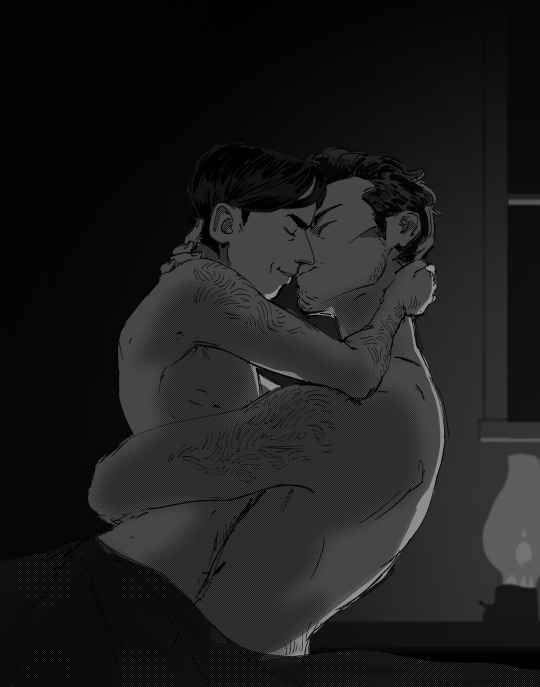
Patho fanart of varying quality
#*combines my interests like ingredients in a soup* you WILL look at my historic clothing doodles I COMMAND you to#pathologic#мор утопия#daniil dankovsky#artemy burakh#burakhovsky#<- as a treat#trying to figure out how to draw artemy is giving me a migraine#he was designed in a lab to be as difficult to draw as possible#also#Daniil is ukrainian. to me#shamelessly projecting my ethnicity onto fictional characters once again#don’t think too hard about the social/economic implications of artemys clothing#I just like the trim look that kaftans have….#my art
399 notes
·
View notes
Text
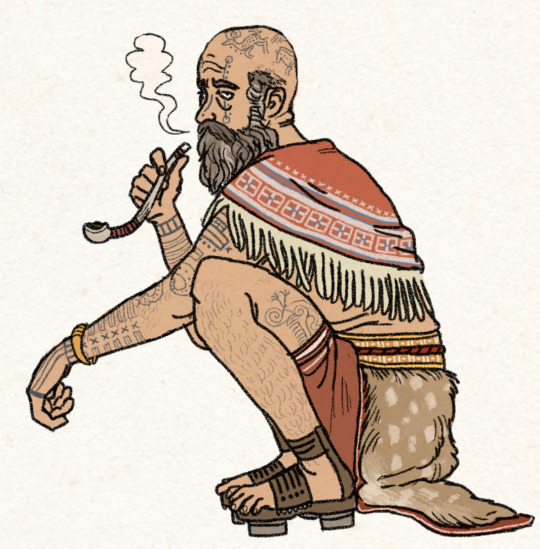
A witch of the Naig-Troibadnnas (Yellowtail river valley) people, resting and enjoying a smoke of the mild stimulant brolge leaf on a hot summer day.
Witches are a small part of the everyday cultural framework among the Hill Tribes. They are individuals considered born possessed by a virgranul, a type of disembodied wild spirit that seeks to inhabit human flesh, either entering the body at the moment of conception, or entering the body at the moment of death. The latter is a dire circumstance that requires significant intercession to fix (the dead body may wander off without rites, leaving the person's soul trapped and liable to warp into the dangerous fuldaigh spirit), while the former circumstance is what causes a person to be born a witch.
In the case of those afflicted in the womb, possession by virgranul is lifelong, and is both a curse and blessing- it divides and isolates them from the human world and causes other wild spirits (both benevolent and malicious) to be perpetually drawn to them, but also allows for them to be attuned to the subtleties of spirits, and able to work magic and divination that the everyday person is incapable of.
Witches are usually recognized from a young age due to marked behavioral differences or atypical development, though are sometimes simply identified as such without obvious behavioral indications, by other witches having read signs of their coming. Their occurrence is not frequent, usually once in a generation for any given tribe. An identified witch child will be taken from their family (the timing varies by tradition, though is usually upon puberty) and into mentorship by an established witch, who will impart their accumulated knowledge and skill and teach the child how to best harness their condition.
One can be a witch regardless of their gender, with the only commonality being that they must remain unmarried, and are expected to never have children (deemed too dangerous, unavoidably placing a child in the path of potentially harmful wild spirits). With no spouses or children to support them in holding a household and herds, witches are instead supported by their communities as means of payment for their services. They typically live in semi-isolation in the boundaries between the village and wilderness (a reflection of their own division between the world of people and of wild spirits, and a protective measure for their communities), and will periodically be brought needed supplies. They do not commonly enter villages unless summoned, or for the sake of certain holidays and festivals, and live most of their lives in seclusion aside from any given mentee (who will in turn care for their mentor in old age).
The societal function of witches is as intermediaries between people and their ancestors, people and wild spirits, and as especially skilled performers of practical magic (most commonly weaving protective spells into worn items, such as clothing or the nose rings of cattle). Forms of practical magic and intercession with ancestors and spirits are performed by all members of society, but a witch has intimate, detailed knowledge of such things and tremendous natural skill that makes them an invaluable asset.
Witches personally discern the identities of the spirits living in any given area and will attempt to familiarize themselves with them, learning in depth about their ways, giving warnings of where the particularly dangerous (or mischievous) ones are, and giving recommendations on which will be receptive to offerings in return for boons. When a village needs to commune with a particularly powerful or dangerous spirit (such as a wildfolk witch), they will commonly send their own witch as an intermediary.
They are ascribed have the ability to directly summon ancestors (who otherwise come and go of their own volition, and rarely ever deign to come at the call of one who is not their descendant). This is of great use when a person finds themselves punished by their ancestors with no certainty as to why, or cases where an orphaned child's ancestry must be identified to gain them proper spiritual support.
They are also regarded as having innate qualities of divination, particularly in reading birdsign (itself generally acknowledged as communication from ancestors, and occasionally gods). The average person has basic knowledge in reading omens of birds and a learned repertoire of key signs, but a witch can divine the messages of birdsign in immense and specific detail, through a vast knowledge system of the meanings of the species, sex, flight direction, gaze, prey, number, and songs of birds. It is common for people to approach a witch for a reading of the skies before undertaking a significant venture or life change, in order to receive detailed and specific advice.
Witches are always literate (and will be taught to read and write by their mentor if they cannot already) and will record their repositories of knowledge in tomes. These are items of absolute secrecy and taboo for a non-witch to touch (the consequences can be severe, you really don't want a witch ancestor-spirit upset with you). Witches can often become competitive about the knowledge stored in these tomes and are known to organize heists amongst themselves in order to gain access to each other's secrets. Most people avoid getting themselves entangled into the complicated rivalries of witches, as these competitions can get ugly and result in many a petty curse if one gains a witch's ire.
---
The only visual cue distinguishing this man as a witch is the tattoos on his forearms, otherwise usually regarded as inappropriate to mark in the contemporary Hill Tribes cultural sphere (the face, upper arms, and sternum is reserved for important clan/tribe/ancestry identification, hands and forearms are reserved for witches, and the rest of the body is appropriate for decoration). These unique forearm tattoos indicate his ancestral connection with a lineage of witches, not blood ancestry but rather the generations of mentors that have produced him. The lines extending down to his fingers are the newest, indicating that he has fully mentored another witch and gained a place in this ancestral line.
The rest of the tattoos here are tribe and blood ancestry identifiers (on the face and upper arms respectively, worn by all members of society), and purely decorative imagery (visible here is a deer, horse, eagle, and a dragon). He also has a snake on his forearm, applied decades ago in an act of youthful rebellion, which has since gotten in the way of critical open skin space.
His clothing is otherwise typical wear for warm seasonal conditions- a man's wool shawl and woven belt, short trousers, decorative deer hide (distinct to the Naig-Troibadnnas), and sandals (these are imported Wardi style sandals, which have been modified with preferred elevated heels). The horn shaped torc on his forearm identifies him as an esteemed elder.
#I think I mentioned the witch tradition by implication in a couple posts but it hasn't come up directly#Witches here are very frequently going to be autistic or having other developmental disorders- with non neurotypical development#and behavior (though without marked intellectual disability) being seen as the impact of possession by virganul.#There's a parallel tradition of witches among the contemporary Finns (distant sibling cultural group to the Hill Tribes) but of MUCH#more core societal significance in which witch-kings are the central figures of power.#Both developed out of common ancestral traditions which diminished in centrality in the Highlands (witches going from clan#leaders to 'guy living on the outskirts of your village who you go to for magical assistance') and increased in centrality in Finns#(witches going from clan leaders to kings with magical powers granted by the gods)#You see a version of the historical predecessor for witches in the drawing of Kulyos and Bernike wrt his forearm tattoos#The proto-Hill Tribes would have regarded their chieftains as a type of witch and the tradition of marking the forearms would#have originally been exclusive to said chieftains. The societal centrality of witches has been lost but they retain traditions of#markings that would have originally identified them as leaders.#(That drawing is also a imaginative though and not just for the bird woman. He's wearing contemporary dress.)#hill tribes#\
231 notes
·
View notes
Text

Posy Rings
With the rise of courtly love in the late medieval period came a range of different tokens to demonstrate such love. Jewellery was a popular choice - as it still is now!
Posy rings are a ring for the finger, sometimes plain, sometimes with a jewel, that contains a phrase of devotion or love as an inscription. These were sometimes in Latin, but most often in French, which was considered the language of courtly love, and was pretty widely spoken in the upper classes.


(Left: pense de moy - “think of me” c. 1400-50)
(Right: de tout mon coer - “with all my heart” c. 1400)
Love inscriptions were often repeated, indicating there were “stock phrases” for jewellers to use.
ANYWAY so I was explaining this to my boyfriend bc I enjoy infodumping (you may have noticed), and he promptly decided to kill me by going “oh like the one ring from Lord of the Rings 😁”.
Like, sure I GUESS
#I cannot with the implications#I’m too much of a history AND tolkien nerd for this shit#medieval#tolkien#lord of the rings#sauron#history#jewellery#medieval jewelry#historical research#infodump#i’ll be on my merry way now
104 notes
·
View notes
Text

Ryuubowl Week - Day 5 Reunions / Soulmates
The background is Meiji shrine, which originally finished in 1920, but I didn't end up looking too deep into when it was first opened to the public.
I was already sad that it took them about 20 years and a Great War to reunite u_u
#ryuubowlweek#dgs#tgaa#asoryuu#ryuunosuke naruhodou#kazuma asogi#art#the unfortunate implications of partial historical accuracy.
70 notes
·
View notes
Text
having some thoughts on the "all myths and fairytales have some element of truth to them" angle RWBY operates on in regards to Faunus origins, because where they factor in to the re-emergence of humanity is incredibly vague
i had a thought though, that we know that somewhere in Vacuo, two children accidentally stumbled into the Ever After, and that was relatively recently compared to the mass of history that's gone relatively unexplored
so what if Faunus originate from some early Humans 2.0 stumbling into the Ever After (presumably at an early enough point that the Cat hadn't quite gotten to obsessing over why the Brothers left them), ascending and gaining animal features (so the Blacksmith is that God of Animals we saw in both Faunus origin tales) and returning to Remnant, and then things spiraling from there
#RWBY#we've got a lot of untapped history and frankly given how even the Kingdoms as they are are relatively recent#with the implication being that places have been settled destroyed re-settled moved re-settled again#people falling through the cracks in the world and returning changed and that historically coinciding with the emergence of Faunus#is something i could entirely see happening#i mean hell - could be it wasn't just part-animal people that came back#they're just the only ones who survived long enough in a hostile world to stick around
88 notes
·
View notes
Text


Apolinario Mabini, Revolutionary, Cesar Adib Majul
he was so fucking funny for this
I had actually spent a long time recreating the interior of his house for that first panel before I remembered he was exiled in guam when this happened lmao. the other guy in this comic is his brother, prudencio, who accompanied him into exile!
speaking of houses, let's talk about his glasses. he had them, and I get emotional whenever I see photos of his personal belongings.....

photo taken from the NHCP Museo ni Apolinario Mabini
also the citation given in the screen cap!! I don't have access to Mabini's La Revolucion Filipina, but if you do and you want to read further: [8] 'Las memorias de Guam' La Revolucion Filipina, Volume II, p233
🍊 twitter 🍊 bsky 🍊 pixiv
#apolinario mabini#prudencio mabini#colonial era ph#komiks tag#art tag#back to posting more ph rev comics because i saw the stupidest take on the heneral luna movie and it's historical accuracy on twitter#the idea there there was no political infighting is so revisionist and embarrassing like oh my god just say you didnt like the movie and#MOVE ON instead of saying ahistorical nonsense. christ. mabini didn't say all of that about paterno for you to go on twitter and#make implications about the revolutionary government
182 notes
·
View notes
Text
Already seen a lot of people use the Cain and Abel archetype to describe Aegon and Aemond’s fratricidal relationship, when more importantly I’d argue that they represent an inversion of the trope.
Traditionally, the tale represents settled lifestyles (Cain the farmer) overcoming nomadic Neolithic customs (Abel the shepherd) through the allegory of fraternal murder- aka, the Cainist cultural revolution defeating Abel’s tradition. Given Aemond is the one who, possessed by jealousy over his brother and a desire for control, turns to fratricide, one would expect him to be characterized as the homicidal Cain-figure, and Aegon as the unsuspecting Abel-figure. However, due to Aemond’s continual fulfillment of tradition and the status quo, and reliance upon Valyrian tradition as the basis for his claim, ideologically-speaking he’s a closer match to Abel. Not to mention, given he also flaunts the qualities which his father continually attempted to emulate (dragon-rider, scholar, fluent Valyrian speaker, pious, etc) - he closer matches the image of the father’s ‘prized son’, we can argue that the Viserys-Aemond bond closer matches the God-Abel dynamic.


Conversely, Aegon is constantly affirmed to be a break from ruling tradition - from a psychological standpoint he departs from the archetypal image of the ruler by being shown to be melancholic and tempestuous, not to mention alienated from his paternal culture and language; whilst from an ideological standpoint, he openly argues against the practice of Valyrian sibling incest and advocates for an embrace of monarchial socialism, departing from the wishes of his advisors, and the traditional customs of the kingdom. Thus, Aegon embodies a cultural revolution, and aligns better with Cain.


The Cain-Abel reading of Aegon and Aemond’s actions doesn’t work out because their fratricidal actions align Aemond with Cain as an antagonist, and Aegon with Abel as a victim - but their ideologies match Aemond with Abel as traditionalists, and Aegon with Cain as revolutionaries. One can make the argument that the analogy still works, due to it being a deliberate inversion of the tale, with tradition striking down any act of upheaval, as opposed to revolution destroying tradition, but I feel that there isn’t enough evidence to support that decision. Naturally, creatives always reflect on Cain and Abel to some extent due to its prevalence as a touchstone of fratricide in the arts, but due to caveats like the action-ideology dissonance and the lack of a father figure endorsing Aemond (or either of them for that matter), amongst others, I think it’s a tenuous stance on its own.
#I know it’s easy to lean on the Cain-Abel story as a frame of reference but if you’re just talking about the act of harming your brother#just say fratricide because Cain and Abel comes with its own truckload of ideological and symbolic and historical implications#I’m reading Anthony Sattin’s Nomads rn and it touches briefly on the Cain/Abel story and what it represents for the Neolithic Evolution#sooo god I’d really recommend#hotd#house of the dragon#aemond targaryen#aegon ii targaryen#aegon targaryen#hotd analysis#hotd meta#Cain and Abel#writings#fratricide
65 notes
·
View notes
Text
selim only being responsible for two pregnancies and both of those by the same woman..... would not typically be a high bar but he is a sehzade in magnificent century and as a sehzade in magnificent century that is a truly impressive feat
#like literally no other dynasty character (sans cihangir) keeps it in his pants as much as he does#suleiman mustafa bayezid CANNOT relate. mehmed to a lesser extent but there is the caveat that he died young#i mean we do see selim sleeping w other women but historically and in-show the implication seems to be that he and his other partners#besides nurbanu take some sort of measure to prevent pregnancy#anyway mc's cast of men is so shitty and chronically horknee that i'm over here legitimately applauding selim for only conceiving kids twic#selim#selim ii#sehzade selim#sultan selim#muhteşem yüzyıl#muhtesem yuzyil#magnificent century#mc tag
25 notes
·
View notes
Text
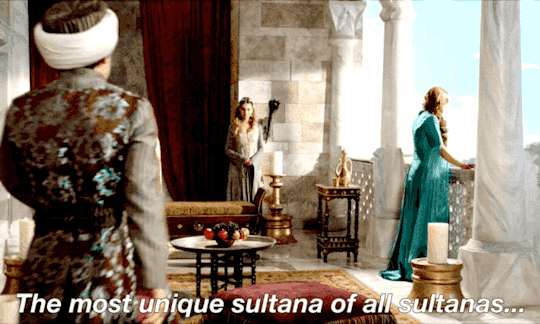
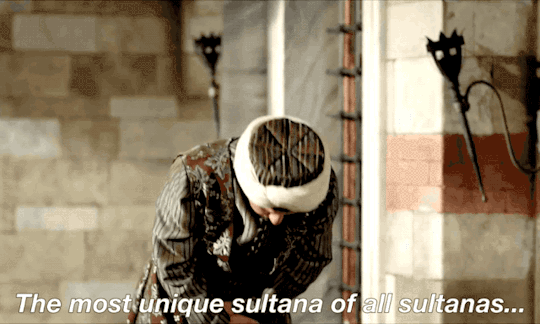
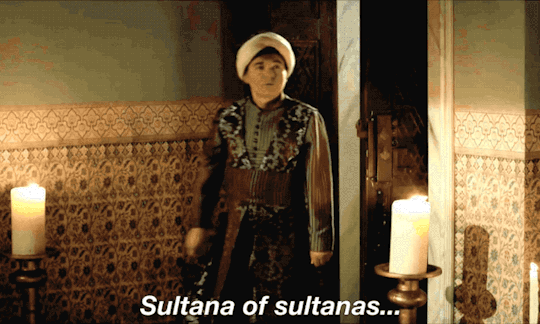

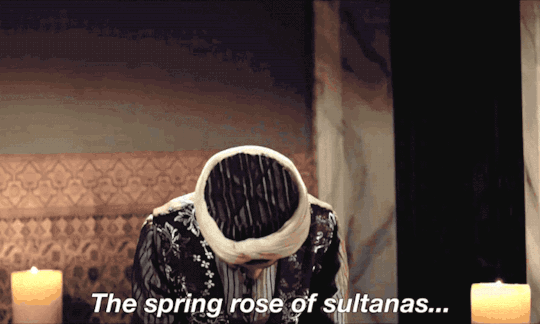
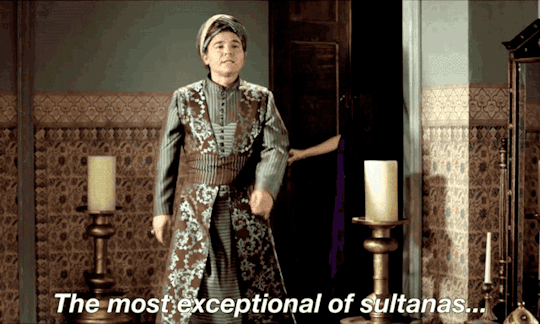
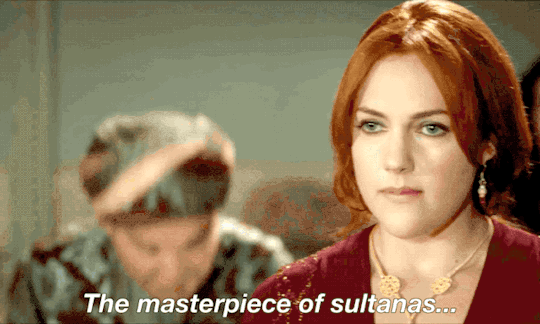
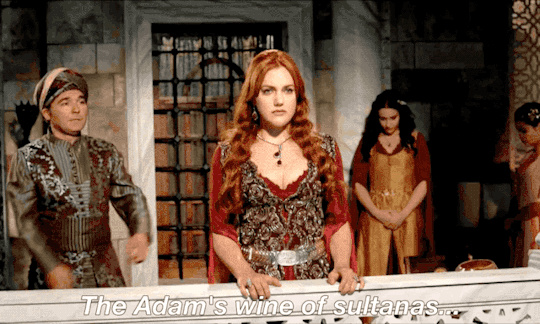
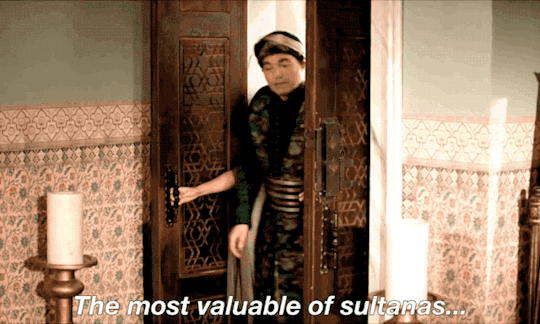
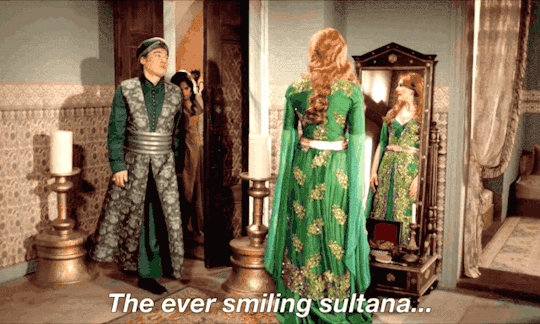

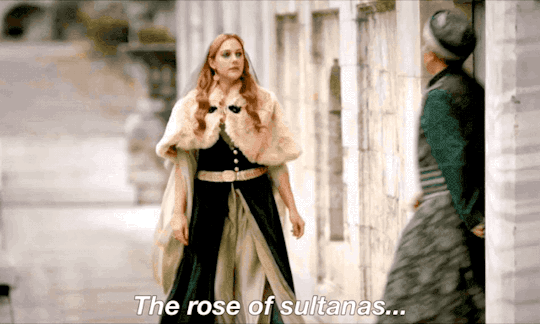


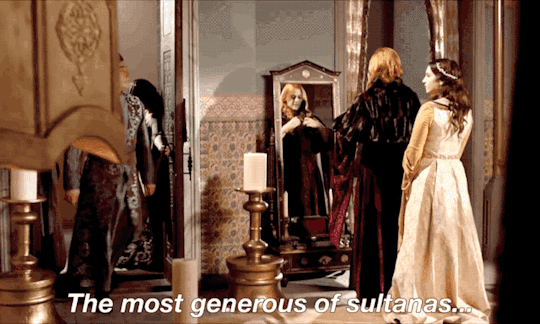



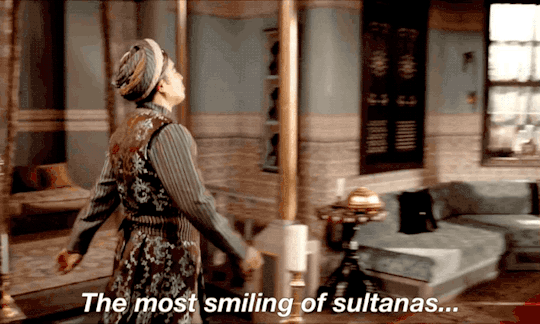
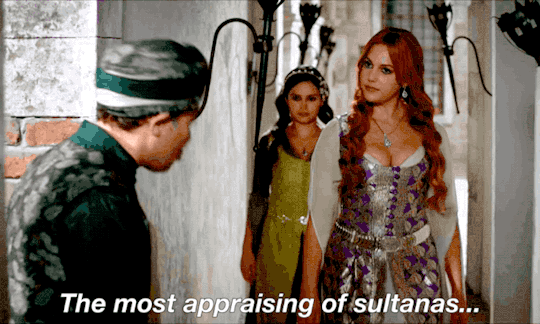

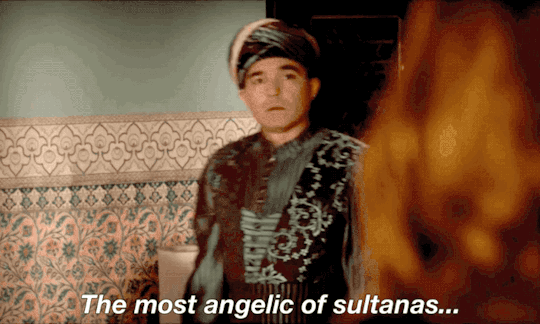
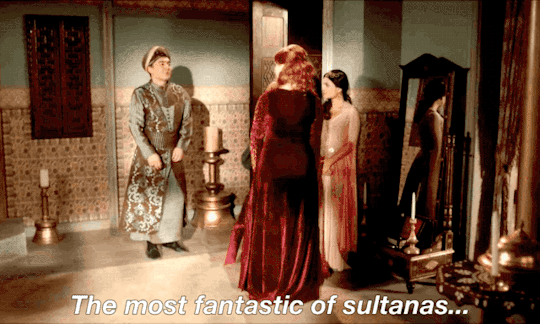

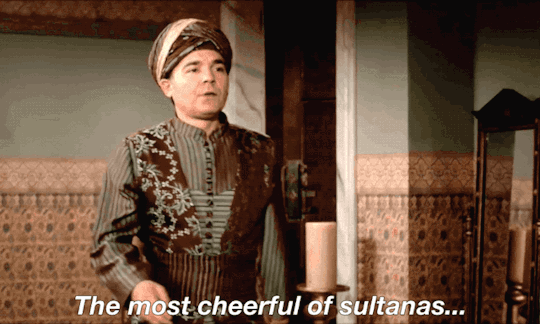

"I wake up in the morning just to see your face, Sultanım."
#Muhteşem Yüzyıl#Magnificent Century#mcedit#Muhtesem Yuzyil#weloveperioddrama#perioddramaedit#period drama#historical drama#Hurrem Sultan#Gul Aga#Outlandish Things#The Cursed Pages#Power and Pride#Overseas Competitor#It Is the Policy and Nothing Personal#Know Your Place#God Forbid Anyone To Experience This#Precautions#Till Death Do Us Part#A Mess#In Spite of the Harem’s Foundations#The Double Celebration#The Last Hope#Blackmail and Its Implications#A Profitable Union#Awkward-Sultana
140 notes
·
View notes
Text
I'm reading an Aubrey-Maturin book again (Post Captain), and after having watched the Hornblower TV series, I think I have a new appreciation for Patrick O’Brian's choice to give the patriotic Royal Navy himbo main character a best friend who’s an ex-member of the United Irishmen. Is it the most historically likely thing? Probably not, but man, nothing makes me appreciate a non-imperial perspective in a work of fiction like experiencing a similar story that didn't have one.
#the way Hornblower (character and series) absolutely do not examine the implications of empire at all#especially with regards to the Haitians and the Irish#the lack of any kind of empathy may be historically accurate but my god is it jarring#and I wonder if some of that has to do with the Hornblower books being written in conformist mid-20th century America#while the Aubrey-Maturin series was started in the 1970s#when Vietnam and Northern Ireland and other colonial conflicts would have been front and center#but that's just a guess#aubreyad#hornblower#can you tell Hornblower gave me psychic damage lol
49 notes
·
View notes
Text

April 1940, Henford-on-Bagley, England


“Do you think the baby will be a boy or a girl?” Amalia asked her best friend.
“Well, I know you want a sister, but Aunt Eleora says she thinks she’s having a boy. Something about the way she’s carrying the baby.”
Amalia frowned. “I want a sister.”
Miranda nodded. Even though she was the oldest of the girls, Amalia was definitely the leader. When Amalia wanted to play outside, they played outside. When Amalia wanted to play with their dolls, they played with their dolls. Many people, including Simon-Elliot, called Amalia extremely bossy, but Miranda didn’t mind—as long as Amalia was happy, she was happy—though she couldn’t explain why.


“My teacher told us about victory gardens yesterday,” Miranda said thoughtfully. “She said that during the Great War, people planted their own gardens so all the food could go to soldiers.”
Amalia nodded. “Miss Bryce told us about that yesterday too. I wonder if Aunt Giselle planted a victory garden when Papa was in the Great War.”
Miranda shrugged. “I don’t think she’s gardening type. Neither are you.”
“Well, Miss Bryce said you don’t have to be a great gardener to plant a victory garden.”
“Why don’t we plant our own victory garden?” Miranda suggested.


Amalia was quiet for a moment before crying out, “I know! Mr. Hilton comes tomorrow to fix the roses, so let’s ask him for help to plant a victory gardenhouse.”
Miranda nodded, ignoring the fact Amalia had taken credit for her idea. “It can be a surprise for your mama and papa!”
“Maybe the vegetables for when the baby comes, and we can make baby food from it!”
“You mean Mrs. Granger will make it?”
Amalia rolled her eyes as the girls laughed.
beginning/previous/next
#the walshes#the walsh legacy#ts4#the sims 4#sims 4 historical#sims 4 decades#sims 4 decades challenge#ts4 historical#history simblr#ts4 story#1940s#ts4 1940s#ww2#wwii#ts4 ww2#miranda macgregor#amalia walsh#what??? those words about amalia have implications for other things??? i wonder what hmmmm
17 notes
·
View notes
Text

2024 reads / storygraph
The Forbidden Book
YA historical fantasy
the daughter of a wealthy businessman in a small shtel under Russian rule is about to be married off, so she runs away and pretends to be a boy - but the name she chose turns out to be the name of a real boy, who’s missing and wanted dead
along with some other teens, they try to unravel the mystery of what happened to him and where he might be, and are drawn into the underbelly of forgery, illegal political pamplets, dybbuks, and angels
genderqueer lesbian MC
arc from netgalley, out oct 1
#The Forbidden Book#sacha lamb#aroaessidhe 2024 reads#I liked this a lot!!! little adventure mystery...#It took a little bit for me to get into it but I love the characters and there’s a lot of detail in the historical setting#LESBIAN WITH AN ANNOYING GHOST IN HER HEAD TROPE ALERT ‼‼#(not extensively but like. is there!!)#I did find that it ended a bit suddenly for me - I wanted a bit more out of the ending!#But I also guess I appreciate the way we don’t find out the details the same way she slipped out of her life in the beginning#no romance#(some vague implications of crushes maybe but like. barely)
34 notes
·
View notes
Text
Underrated artful dodger bit Belle saying "if you mean my house it's an estate"
#because it's hilarious but also! because I love you historical noblewomen who are fully aware of the power and implications of their status!#I LOVE YOU!!!!#she KNOWS her position in the colony!!!! SO refreshing so important to meeeee#the artful dodger#tad
63 notes
·
View notes
Text
hypnotizing the new cars animation team. you WANT to make sarge and fillmore disney’s “first” canon gay couple. you will do this. i am chasing you with hammers.
#pixar cars#sargemore#i KNOW the historical implications. but even JUST ONE MENTION OF THE SUMMER OF LOVE. that’s all we need.#(it won’t happen)
85 notes
·
View notes